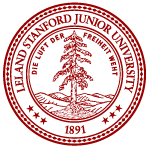Software
Note: We are pleased that you find programs from the lab to be of
interest. Our software gathers many new users each day, and we work hard
to include informative error messages and detailed user manuals. We
welcome your feedback and wish to facilitate your use of the programs.
When questions do arise, it is much appreciated if users put
their best effort into making sure that the answer is not in the manual
before contacting us. Thanks for your help.
ADZE is a
program that implements the rarefaction method for analyzing allelic
diversity across populations while correcting for sample size
differences. Using individual multilocus genotype data on genetic
polymorphisms,
ADZE computes estimates of allelic richness,
private allelic richness, and private allelic richness for
combinations of populations.
ADZE was used for generating
Figure 1a in "Genotype, haplotype, and copy-number variation in
worldwide human populations"
Nature 451: 998-1003 (2008). A
program note describing
ADZE was published in
Bioinformatics 24: 2498-2504 (2008).
CLUMPP
is a program that deals with label switching and multimodality
problems in population-genetic cluster analyses.
CLUMPP
permutes the clusters output by independent runs of clustering
programs such as
structure,
so that they match up as closely as possible. The user has the option
of choosing one of three algorithms for aligning replicates, with a
tradeoff of speed and similarity to the optimal alignment. A
program note describing
CLUMPP was published in
Bioinformatics 23: 1801-1806
(2007).
distruct is a program that can be used to graphically display
results produced by the clustering program
structure
or by other similar programs. The figures produced by
distruct display individual membership coefficients in the
same form as used in
"Genetic structure
of human populations" Science 298: 2381-2385
(2002). Various options enable the user to control left-to-right
printing order of populations, bottom-to-top printing order of
clusers, colors, and other graphical details. A program note
describing
distruct was published in
Molecular Ecology Notes 4:
137-138 (2004).
haploconfig is a program that can be used to implement tests
of neutrality based on the frequency distribution of haplotypes in a
sample of DNA sequences (the "haplotype configuration") and the number
of segregating sites. The neutrality tests can be performed
conditional on the standard neutral coalescent model with or without
recombination, exponential population growth, or island migration. A
description of the method underlying the program can be found in
"Statistical tests of the coalescent model
based on the haplotype frequency distribution and the number of
segregating sites" Genetics
169: 1763-1777 (2005). The
haploconfig program can also
be used as a coalescent simulator for models with or without
recombination.
infocalc is a small script for calculating statistics that
measure the ancestry information content of genetic markers. A
description of these statistics can be found in
"Informativeness of genetic markers for
inference of ancestry" American Journal of Human Genetics 73:
1402-1422 (2003), with extensions in
"Algorithms for selecting informative marker panels for population
assignment" Journal of Computational Biology 12: 1183-1201
(2005).
MicroDrop is a program that estimates allelic dropout rates from
nonreplicated microsatellite genotype data.
MicroDrop uses the
estimated dropout rates to provide imputed data sets that sample missing
genotypes (and replace some homozygous genotypes) using an allele
frequency model with or without Hardy-Weinberg equilibrium. A description
of the method underlying the program can be found
in
"A maximum likelihood method
to correct for allelic dropout in microsatellite data with no replicate
genotypes" Genetics 192: 651-669 (2012).
Monophyler computes monophyly probabilities for gene lineages
conditional on a species tree.
Monophyler
uses the coalescent together with an arbitrary species tree to determine
the monophyly probabilities. The calculations are detailed in three
papers.
(1) Using the method of
"The probability of monophyly of a
sample of gene lineages on a species tree" Proceedings of the National
Academy of Sciences USA 113: 8002-8009
(2016),
Monophyler calculates the probability of monophyly
for a set of lineages or the reciprocal monophyly probability for a pair
of sets of lineages. (2)
Using
"The probability of
reciprocal monophyly of gene lineages in three and four
species" Theoretical Population Biology 129: 133-147 (2019),
it calculates various monophyly probabilities involving three or four
lineage sets in three-taxon and four-taxon species trees. (3) Finally,
using
"The
probability of joint monophyly of samples of gene lineages for all species
in an arbitrary species tree", it calculates the probability of
reciprocal monophyly for an arbitrary number of sets of lineages on an
arbitrary species tree.

